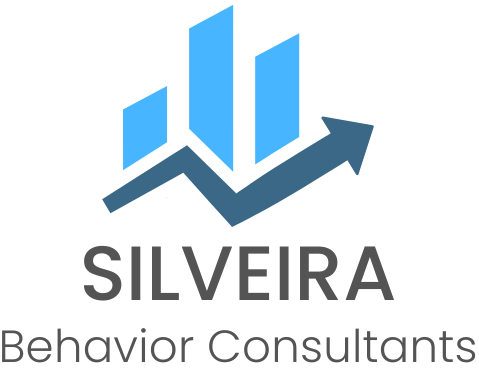Breakthroughs in autism therapy are transforming lives, and nowhere is this more evident than in the evolving field of Applied Behavior Analysis (ABA) for Autism Spectrum Disorder (ASD). As we move into 2025, families, caregivers, and professionals are seeking the latest insights and tools to better support individuals on the autism spectrum.
This comprehensive guide explores the core principles, current innovations, and practical strategies of ABA for ASD. Readers will gain clarity on foundational concepts, emerging trends, step‑by‑step therapy processes, and how technology is driving new possibilities.
If you’re ready to make informed decisions and empower those you care about, dive in to discover why the future of ABA for ASD is brighter than ever.
Understanding ABA and ASD: Foundations and Key Concepts
Understanding the relationship between ABA and ASD is essential for anyone navigating autism support in 2025. ABA therapy remains the gold standard for evidence‑based intervention, but its application continues to evolve with new research, ethical practices, and family‑centered approaches. At its foundation, ABA focuses on breaking down complex skills into manageable steps, using reinforcement strategies to encourage positive behaviors and reduce challenges. For families, this means therapy plans that are individualized, measurable, and adaptable to each child’s unique needs.
Diagnosis and Early Identification
Early diagnosis is critical for effective intervention. Recognizing signs such as delayed speech, repetitive behaviors, or limited social interaction allows families to connect with therapy centers sooner, maximizing developmental outcomes.
Therapy Approaches and Individualization
ABA programs are tailored to each child’s strengths and challenges. Treatment plans often include structured sessions, natural environment teaching, and play‑based learning, ensuring therapy is both effective and engaging.
Ethical Considerations in ABA
Modern ABA emphasizes ethical practice, transparency, and respect for individuality. In 2025, therapy centers prioritize family involvement, cultural responsiveness, and strategies that empower children rather than simply manage behaviors.

Defining Autism Spectrum Disorder (ASD)
Autism Spectrum Disorder (ASD) is a developmental condition that impacts communication, social skills, and behavior. According to the CDC (2024), about 1 in 36 children are diagnosed with ASD, reflecting both increased awareness and improved screening practices. Diagnostic criteria outlined in the DSM‑5‑TR highlight challenges in social interaction, restricted interests, and repetitive behaviors.
Common signs may include difficulty with verbal and nonverbal communication, challenges in making friends, and reliance on routines. However, every individual’s experience is unique—no two presentations of autism are the same. Misconceptions persist, such as the belief that all people with ASD lack empathy or have intellectual disabilities. In reality, ABA ASD research demonstrates a wide spectrum of abilities and strengths.
What is Applied Behavior Analysis (ABA)?
Applied Behavior Analysis (ABA) is the leading evidence‑based approach for supporting individuals with ASD. Rooted in behavioral science, ABA focuses on understanding how behavior works, how it is influenced by the environment, and how learning takes place.
Core principles include reinforcement (rewarding desired behaviors), prompting, shaping, and generalization (applying skills across different settings). ABA therapy for ASD has evolved since the 1960s and is now recognized by organizations such as the U.S. Surgeon General and the American Psychological Association. Modern ABA ASD programs are highly individualized, adapting to each learner’s unique needs and goals.
How ABA Addresses the Needs of Individuals with ASD
The strength of ABA ASD intervention lies in its adaptability and data‑driven design. ABA helps individuals acquire essential life skills while reducing behaviors that interfere with learning or daily living. Therapists create individualized treatment plans with measurable goals for language development, social interaction, and self‑care.
For example, a child may learn to communicate needs using picture cards or develop turn‑taking skills through play. Consistent progress tracking ensures strategies remain effective and are adjusted when necessary. Recent studies show that targeted ABA ASD interventions lead to significant improvements in both skill acquisition and behavior reduction, supporting long‑term independence.
Ethical Considerations and Critiques of ABA
Ethics play a central role in ABA ASD practice. The Behavior Analyst Certification Board (BACB) regularly updates guidelines to prioritize client dignity, informed consent, and cultural sensitivity. In 2025, there is a stronger emphasis on respecting neurodiversity and including autistic voices in therapy planning.
Critiques of ABA often raise concerns about overly rigid or compliance‑based methods. Today’s best practices address these issues by emphasizing choice, respect, and collaboration. Ongoing debates and evolving standards ensure ABA ASD continues to grow more person‑centered, responsive, and inclusive for all individuals.
ABA ASD in 2025: Trends, Innovations, and Policy Changes
The landscape of ABA ASD is rapidly evolving in 2025. Families, practitioners, and individuals with autism are witnessing exciting changes that promise more effective, accessible, and inclusive care. Emerging trends include the integration of digital tools, hybrid therapy models, and stronger commitments to cultural competence. Policy shifts are also expanding insurance coverage and reinforcing ethical standards, while diversity and inclusion remain at the forefront of modern ABA ASD programs.

Advances in ABA Methodologies
In 2025, ABA ASD methodologies are expanding to include a broader range of evidence‑based interventions. Naturalistic Developmental Behavioral Interventions (NDBIs) are gaining traction, blending structured teaching with natural environments to make therapy more engaging and effective. Programs now integrate trauma‑informed care and prioritize neurodiversity‑affirming practices, ensuring therapy respects each individual’s identity and lived experiences.
Hybrid ABA models that combine clinic, home, and community‑based strategies are showing improved outcomes. Recent research highlights how these approaches enhance skill generalization and strengthen family engagement. This shift reflects a growing movement toward inclusion and ethical practice, making ABA ASD more adaptive and empowering than ever.
Technology and Digital Tools in ABA
Technology is reshaping how ABA ASD services are delivered and tracked. Telehealth has become a cornerstone, enabling remote assessments and therapy sessions that reach families in rural or underserved areas. Innovative data collection apps and wearable devices now allow real‑time progress tracking, providing immediate feedback to both therapists and families.
AI‑driven analytics are helping practitioners identify behavioral patterns and adjust interventions quickly. Digital platforms have also increased engagement, particularly for young learners who are comfortable with tablets and interactive media. These advancements ensure ABA ASD is more accessible, efficient, and responsive to individual needs.
Policy and Insurance Updates
Significant policy changes in 2025 are improving access to ABA ASD services. Medicaid expansions and new private insurance mandates are reducing financial barriers for families. State‑level reforms are focusing on underserved communities, ensuring more equitable coverage regardless of geographic location. Legislation now supports a broader range of service settings, including schools and community programs. These policy shifts mean more children and adults with ASD can benefit from tailored ABA ASD interventions, creating a stronger and more inclusive network of support for families navigating the therapy landscape.
Workforce Development and Training
The ABA ASD workforce is undergoing major transformation in 2025. The Behavior Analyst Certification Board (BACB) has updated credentialing standards to emphasize multicultural competence, ethical practice, and ongoing professional development. Training programs now include modules on cultural sensitivity, neurodiversity, and client‑centered care.
There has been a notable increase in certified practitioners, reflecting the growing demand for quality ABA ASD services. Workforce diversity is also on the rise, with more professionals from varied backgrounds joining the field. This progress ensures therapy teams better reflect and serve the communities they support.
Diversity, Equity, and Inclusion in ABA Services
Addressing disparities in ABA ASD access and outcomes is a top priority in 2025. Providers are adopting culturally responsive care models that account for language, values, and family traditions. Community‑based outreach programs are making measurable impacts, especially for minority and low‑income families.
Efforts to include autistic voices in therapy planning are strengthening, ensuring interventions remain respectful and individualized. By focusing on diversity, equity, and inclusion, ABA ASD services are creating more positive and lasting outcomes for all individuals, regardless of background or circumstance.
Step‑by‑Step ABA Therapy Process for ASD in 2025
Embarking on the ABA ASD journey in 2025 means families and professionals can expect a structured, collaborative, and transparent process. Each step is designed to maximize outcomes and empower everyone involved. From the initial assessment to individualized treatment planning, therapy sessions, progress monitoring, and preparation for lifelong success, modern ABA ASD programs emphasize clarity, family involvement, and measurable growth.

Initial Assessment and Goal Setting
The ABA ASD process begins with a comprehensive intake designed to capture a full picture of the individual’s strengths, challenges, and preferences. Clinicians gather detailed information through caregiver interviews, standardized assessments, and functional behavior analysis. Family involvement is central to this stage. Therapists respect cultural values and routines, ensuring every voice is heard. Together, the team collaborates to set measurable, individualized goals. For example, when working with a nonverbal 4‑year‑old, goals may focus on using picture exchange communication or requesting basic needs.
Key Elements of the Assessment
- Collecting medical, developmental, and educational history
- Observing behavior across multiple settings
- Identifying priorities in collaboration with families
By rooting ABA ASD goals in real‑life needs, this step establishes the foundation for effective and meaningful progress.
Developing the Treatment Plan
Once the assessment is complete, the ABA ASD team crafts a personalized treatment plan. This plan selects evidence‑based interventions tailored to the client’s profile. Collaboration is essential—Board Certified Behavior Analysts (BCBAs) often work alongside speech‑language pathologists, occupational therapists, and educators to ensure holistic care.
Family priorities shape the plan. If a child struggles with morning routines, strategies are integrated into daily life. Data‑driven tools, such as digital progress trackers, guide decision‑making and allow interventions to be adjusted quickly.
Components of a Strong Treatment Plan
- Clearly defined, measurable objectives
- Methods for teaching new skills and reducing barriers
- Strategies for generalizing skills across home, school, and community
By treating the ABA ASD process as a partnership, families and professionals ensure interventions fit seamlessly into everyday experiences.
Implementation: Direct Therapy and Skill Building
Direct therapy is where ABA ASD comes to life. Structured sessions use techniques such as discrete trial training, natural environment teaching, and social skills groups. Therapists reinforce positive behaviors, prompt new skills, and gradually fade support to build independence. Technology plays a major role in 2025. Tablet‑based learning, video modeling, and data collection apps enhance engagement and track progress in real time. For instance, a school‑based social skills group may use video modeling to teach sharing and turn‑taking.
Research continues to highlight the effectiveness of these strategies. According to the Applied Behavior Analysis in Children and Youth with Autism Spectrum Disorders: A Scoping Review, evidence‑based ABA ASD interventions yield measurable gains in social, communication, and adaptive skills.
Key Strategies in Direct Therapy
- Positive reinforcement and shaping new behaviors
- Opportunities for practice in natural settings
- Regular feedback for families and educators
This dynamic phase ensures ABA ASD therapy remains responsive, engaging, and results‑driven.
Monitoring Progress and Adjusting Interventions
Continuous data collection is a hallmark of ABA ASD therapy. Therapists track each goal using charts, graphs, and digital tools to visualize progress. Regular team meetings review this data, ensuring that families, caregivers, and professionals remain informed and engaged. If a strategy is not working or new behaviors emerge, the treatment plan is adapted. For example, if a child begins to communicate verbally, goals may shift toward more complex language development or peer interactions.
Families play an active role in these reviews, sharing feedback and observations from home. This ongoing collaboration ensures ABA ASD interventions remain relevant, effective, and responsive to each child’s growth.
Transition Planning and Generalization
The final step in the ABA ASD process is preparing for life’s transitions. Therapists help families plan for changes such as starting school, moving to a new classroom, or entering adolescence.
Importance of Generalization
Generalization is key to long‑term success. Skills are practiced in different settings, with various people, to ensure lasting independence. Community partners—including teachers, vocational coaches, and peers—are often involved to support smooth transitions.
Long‑term outcome data shows that when ABA ASD therapy emphasizes transition planning and generalization, individuals retain skills and thrive across environments. By following this structured process, ABA ASD therapy in 2025 empowers individuals, families, and communities to achieve meaningful progress at every stage.
Evidence-Based Strategies and Real-World Applications
Discovering the most effective strategies for ABA ASD requires a blend of scientific rigor and practical application. In 2025, families and professionals have access to a toolkit of proven ABA methods that support communication, independence, and quality of life for individuals with autism.
Core ABA Techniques for ASD
The foundation of ABA ASD success lies in techniques such as positive reinforcement, task analysis, chaining, shaping, and prompting. Positive reinforcement encourages desired behaviors with immediate rewards, while task analysis breaks complex skills into manageable steps. Chaining links individual steps together, helping learners master entire routines. Shaping gradually builds new behaviors by reinforcing closer approximations. Prompting supports skill acquisition until tasks can be performed independently.
For example, teaching a child to brush their teeth may begin with reinforcing each step—picking up the toothbrush, applying toothpaste, and so on. These structured methods are backed by decades of research and remain central to ABA ASD programs.
Social Skills and Communication Interventions
Social communication is often a challenge in ABA ASD. Evidence‑based interventions such as peer‑mediated instruction, video modeling, and social stories help individuals understand social cues and build meaningful relationships.
Augmentative and alternative communication (AAC) tools, including speech‑generating devices, further support language development. Recent studies show that targeted social skills interventions significantly increase peer interactions and conversational abilities.
Behavior Reduction and Self-Regulation
Addressing challenging behaviors is a cornerstone of ABA ASD. Functional behavior assessments (FBA) identify the reasons behind behaviors, leading to individualized behavior intervention plans (BIPs).
Strategies include teaching coping skills, self‑management, and replacing problem behaviors with positive alternatives. For instance, a child who hits when frustrated may learn to request a break instead. These approaches empower individuals to manage emotions and behaviors, leading to greater independence and safety.
Parent and Caregiver Training
Empowering families is essential in ABA ASD. Parent training programs provide knowledge and tools to implement ABA strategies at home. Workshops, telehealth coaching, and resource toolkits are widely available.
Research shows that when caregivers are actively involved, children achieve better outcomes and maintain new skills longer. Parents learn how to reinforce communication attempts, use visual supports, and manage daily routines effectively. ABA ASD training also addresses caregiver well‑being, offering support groups and stress‑reduction resources to strengthen family resilience.
School-Based and Community ABA Programs
ABA ASD strategies thrive when integrated into schools and communities. Inclusive classrooms, teacher collaboration, and Individualized Education Programs (IEPs) ensure ABA techniques support both academic and social goals.
Community‑based instruction brings learning into real‑world settings such as grocery stores or playgrounds, where skills generalize more effectively. Partnerships with educators and community organizations expand access, making evidence‑based ABA support available beyond the clinic.
Measuring Success: Outcomes and Quality of Life
Measuring progress in ABA ASD involves standardized tools like the Vineland‑3 and ABLLS‑R, which assess communication, daily living, and socialization skills. These assessments provide objective data to guide intervention.
Quality of life is a core focus, emphasizing independence, social participation, and long‑term well‑being. Longitudinal studies reveal that individuals receiving ABA ASD services maintain gains in key areas for years. By tracking outcomes and prioritizing real‑world impact, ABA professionals and families ensure interventions deliver meaningful, lasting results.
The Role of Families and Caregivers in ABA ASD Success
Families and caregivers are the backbone of success in ABA ASD. Their involvement shapes therapy outcomes and daily experiences. By embracing collaboration, resilience, and advocacy, families help transform challenges into opportunities for growth and independence.
Family-Centered ABA Models
Effective ABA ASD programs place families at the center of planning and goal setting. Therapists collaborate with parents, siblings, and extended family to integrate therapy into daily routines. Everyday activities such as mealtime or bedtime become powerful learning opportunities when shaped by family‑centered strategies.
Navigating Challenges and Building Resilience
Families may face burnout when balancing therapy with work and other responsibilities. Access to support groups, respite care, and counseling services can make a profound difference. Open communication with the therapy team helps lighten the emotional load and improves treatment outcomes.
Advocacy, Resources, and Community Engagement
Families often connect with organizations such as Autism Speaks or local autism societies for guidance. These groups provide workshops, social events, and resource toolkits to help families understand their rights and access essential services. Engaging with inclusive recreation and employment programs strengthens both the individual’s and the family’s sense of belonging.
Silveira Behavior Consultants: Personalized ABA Therapy in Chicago
For families seeking personalized ABA ASD support in Chicago, Silveira Behavior Consultants offers a range of individualized services. Their team emphasizes multicultural awareness, family‑centered care, and a strong commitment to data‑driven results, ensuring therapy is both effective and inclusive.
Therapy Options for ABA ASD in 2025
Families today have access to a wide range of ABA ASD therapy options, including clinic‑based, in‑home, school, and community settings. This flexibility makes it easier to find the right fit for each child’s unique needs. Bilingual services and adaptable treatment plans ensure therapy remains accessible and affordable for diverse families.
A collaborative approach lies at the heart of these programs. By respecting cultural values and individual preferences, therapy centers create supportive environments where children can thrive across different settings.
Integrating Technology and Future Directions in ABA ASD
The landscape of ABA ASD is rapidly evolving as technology paves new pathways for intervention and support. In 2025, families and practitioners are experiencing an era where innovation and evidence‑based practice intersect, unlocking greater potential for individuals with autism. Advancements in digital tools, research, and skill‑building strategies are making ABA ASD more effective, accessible, and personalized than ever before. The future of autism therapy is increasingly shaped by technology, ensuring interventions remain dynamic and responsive to each child’s growth.
Emerging Technologies in ABA
Emerging technologies are transforming how ABA ASD interventions are delivered. Artificial intelligence enables more precise assessments, while virtual reality (VR) makes social skills training immersive and engaging. For example, VR simulations allow individuals to practice navigating community spaces or interpreting social cues in safe, controlled environments.
Wearable devices now provide real‑time behavior tracking, giving therapists actionable data to tailor interventions. Apps for data collection and skill reinforcement are becoming more user‑friendly and adaptable. As highlighted in Factors to Consider When Teaching Social Skills to Neurodivergent People, video modeling and feedback are making social learning more effective for neurodivergent individuals.
These innovations not only enhance engagement but also streamline therapy, making ABA ASD more individualized, efficient, and impactful.
Telehealth and Remote ABA Services
Telehealth has become a cornerstone of ABA ASD therapy, breaking down barriers to access and expanding opportunities for families. Remote services are now widely available, particularly for those in rural or underserved areas. Through video conferencing, therapists can observe, coach, and provide real‑time feedback, ensuring continuity of care even when in‑person visits are not possible. The benefits of telehealth include reduced waitlists, flexible scheduling, and stronger family involvement. Recent studies confirm that the effectiveness of telehealth‑delivered ABA ASD is comparable to traditional models, with families reporting high satisfaction rates. Digital platforms also support secure sharing of progress data and resources, keeping caregivers and professionals connected. This technological shift is making quality ABA ASD support more accessible and responsive than ever before.
Research Frontiers and Innovations
Ongoing research is driving the next generation of ABA ASD interventions. Large‑scale clinical trials are exploring how genetic and neurological insights can personalize therapy, helping practitioners match interventions to each individual’s unique needs.
Collaboration across disciplines is also expanding. ABA professionals increasingly work alongside occupational therapists, speech‑language pathologists, and mental health experts to provide holistic care. Studies are examining how combining ABA ASD with these therapies can further enhance outcomes. As research continues to break new ground, families can expect even more evidence‑based, effective, and compassionate approaches to ABA ASD in the years ahead.
Preparing for the Future: Skills for Lifelong Success
The ultimate goal of ABA ASD therapy is to empower individuals for lifelong success. Future‑focused programs teach not only daily living and communication skills but also self‑advocacy and vocational abilities. Transition planning begins early, preparing youth for adolescence, adulthood, and community integration.
Skill‑building now extends to areas such as digital literacy, job readiness, and independent living. Caregiver support and training, as emphasized in Supporting Neurodivergent Caregivers, remain vital for sustaining progress and navigating transitions.
By centering quality of life and independence, ABA ASD continues to evolve—ensuring every individual has the tools and support needed to thrive.
Silveira Behavior Consultants: Partnering for Your Child’s Growth
If you’re inspired by the new possibilities in
ABA therapy for ASD in 2025, you’re not alone. Every journey is unique, and having the right support can make all the difference. At
Silveira Behavior Consultants, we help families navigate options—whether you’re seeking school readiness, in‑home therapy, or guidance on building social skills.
Let’s work together to create a plan that fits your family’s needs and celebrates your child’s strengths. Inquire About Services today and take the next step toward meaningful progress.





